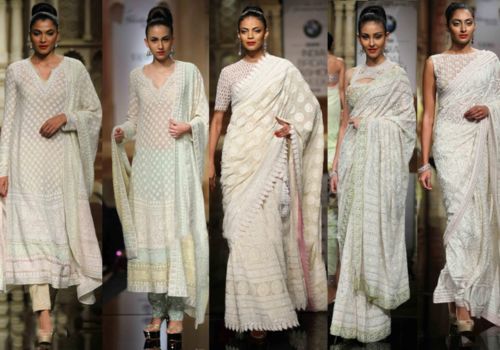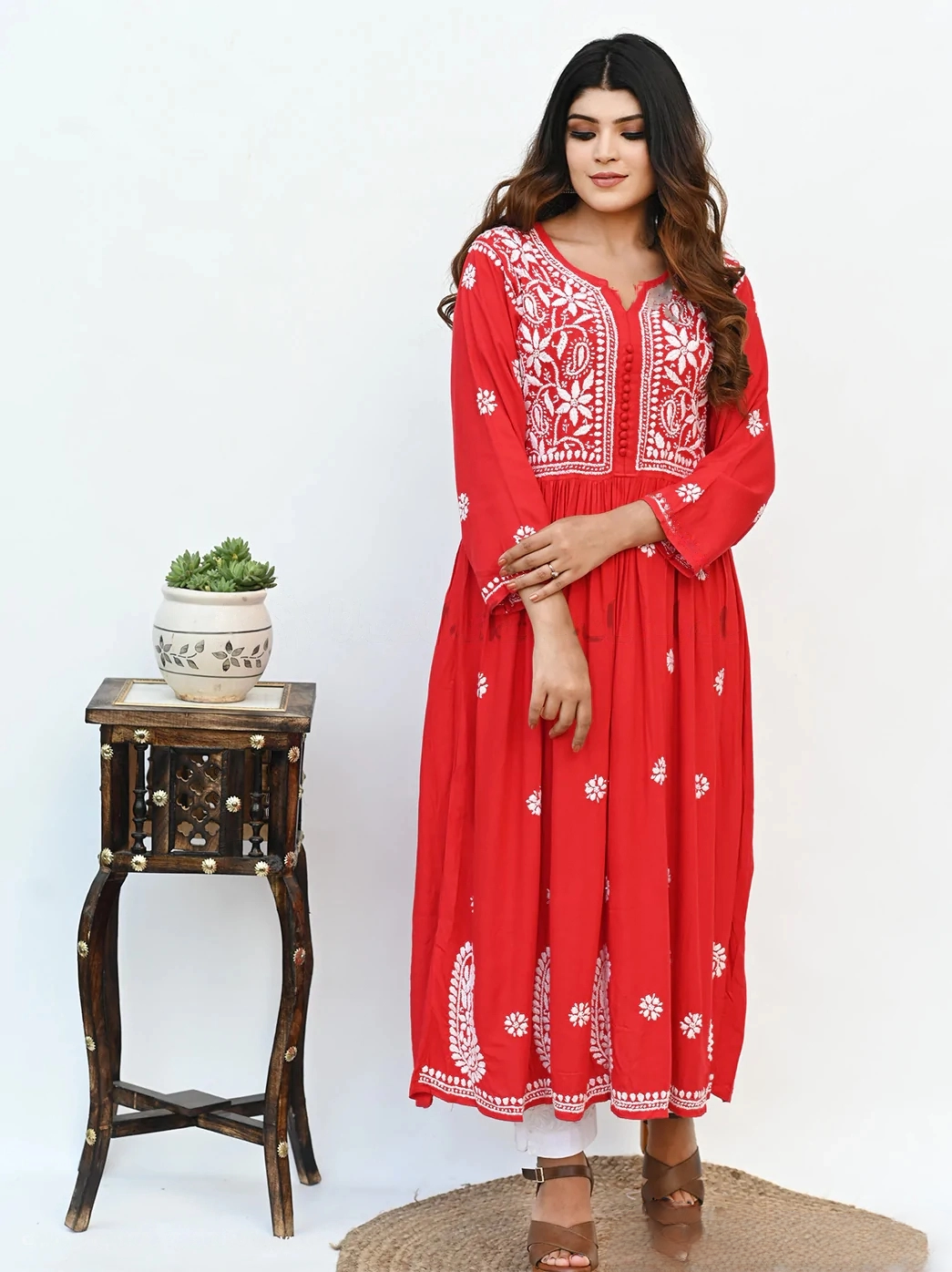Chikankari and Its Origin in India

The origin of Chikankari dates back to the time in the 16th century when it flourished under the Mughal period. Noor Jahan, the wife of Mughal Emperor Jahangir, was the first to introduce this art form from Persia. Later, it became a traditional handcraft that’s celebrated by the majority of women in India today.
When machines came into existence in the 18th century, Chikankari came to a standstill. It was majorly because the advent of machine-made textiles was becoming more popular at that phase of now. However, as Chikankari adapted to the latest modernizations and trends, people again came in favor of the unique and beautiful art of Chikankari.
Currently, Lucknowi Chikankari is one of the oldest handcrafts of Indian culture that’s becoming widely popular throughout the world. Needless to say, Chikankari is a popular ethnic wear that’s counted as one of the best traditional wear.
See Also: Chikankari & It’s Tradition in Lucknow
What does Chikankari define?
In basic terms, Chikankari is a beautiful art form on different fabrics that are preferable for clothing purposes. It’s the most elegant form of embroidery that’s suitable for any type of clothing. In addition, it’s to be made sure that the fabric should be lightweight as the stitches need to pass through it.
The term “Chikankari” originates from Chikan, which defines the embroidery work done on a plane fabric. Likewise, the artisans use different threads (in colors) to make beautiful patterns with needlecraft.
The most common types of stitches that artisans use for Chikankari embroidery include –

- Bakhiya
- Teaching
- Hool
- Zanzeera
- Panda
- Jaali
In popular opinion, Chikankari is worth the price that customers pay as it’s the hard work of artisans. In addition, they work tirelessly to complete a single piece of work using the handcrafted art of Chikankari.
Chikankari as Indian Ethnic Wear

As we talk about Indian culture and its diversity, there’s no other country with such a beautiful blend. In the same manner, the attire of Indian culture is influencing not only the youth but also people from around the world. No doubt, Chikankari is one of the best pieces of clothing that comes under the category of Indian Ethnic Wear.
There are many other traditional wear dresses in Indian culture, including a saree, dhoti, salwar suit, lehenga, kurta, and others. Now, as we talk about Chikankari, the ethnic clothing design of Indian culture, there are many options available.
Read Also: Chikankari: Tools & Equipment for Manufacturing
Tradition Wear & Chikankari Design

All the main categories of Indian traditional wear clothes are now readily available in Chikankari work. Whether it’s a simple kurta, saree, or lehenga, you can get any attire with a complete Chikankari design. Now, the choice is yours whether you prefer to buy a simple yet elegant traditional wear Chikankari dress or something in complete design!
While looking at the heavier side of Chikankari dresses, they are primarily available in silk, chiffon, cotton, and velvet fabric. Alongside, some can be made on serious work that includes beautiful designs and motifs all over the material. In addition, they also consist of embellishments that amplify the art form.
Conclusion
In order to purchase the most authentic form of Chikankari dresses, you must know the difference between original and low-quality designs. Most popularly, the art form of Chikankari is not that expensive as the local artisans work on beautiful designs. However, handcrafted work will be a little bit costlier than machine work.
If you are looking to buy traditional Indian Chikankari kurti, dresses, or other products, you can refer to our website. At Aabroo Chikankari, we deliver the best quality Lucknowi Chikankari kurta, saree, and other dress materials. So, you can order the best Chikankari suits in various color options and designs.
Related Articles:
Handcraft Vs. Machine Embroidery

